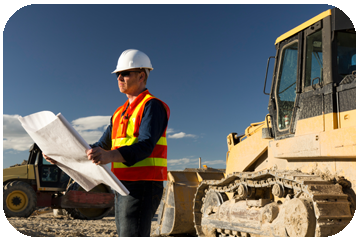Geo Tech Engineer: Enhancing Site Evaluations with Advanced Geotechnical Techniques
Geo Tech Engineer: Enhancing Site Evaluations with Advanced Geotechnical Techniques
Blog Article
The Interdisciplinary Approaches in the Geotechnical Industry: Linking the Space Between Design, Geology, and Environmental Science for Optimal Job Outcomes
The combination of design, geology, and ecological scientific research within the geotechnical market is not just helpful; it is necessary for achieving optimal project outcomes. What strategies might emerge to facilitate this crucial collaboration and boost the efficacy of geotechnical methods?
Relevance of Interdisciplinary Cooperation
The relevance of interdisciplinary collaboration in the geotechnical sector can not be overemphasized. Effective geotechnical jobs need the integration of diverse competence from various fields, including design, geology, and ecological scientific research. This collaboration ensures that all aspects of a task are thought about, causing extensive services that deal with intricate challenges.
When functioning in isolation,Interdisciplinary collaboration cultivates advancement by enabling experts to share understandings and methods that might not be obvious. By leveraging the strengths of multiple disciplines, teams can identify potential dangers, enhance design processes, and improve the sustainability of geotechnical projects. Such collaboration promotes an all natural understanding of site-specific problems, which is critical for exact assessment and decision-making.
The intricacy of geotechnical projects necessitates a worked with approach to problem-solving. When designers, rock hounds, and environmental researchers collaborate, they can produce a cohesive strategy that aligns technical demands with ecological considerations and governing compliance. This harmony not only enhances job results but additionally adds to the lasting durability of facilities. Eventually, interdisciplinary cooperation is vital for advancing finest techniques and attaining quality in the geotechnical industry.
Trick Functions of Each Technique
Collaboration among numerous techniques is not simply valuable; it is crucial for the effective execution of geotechnical tasks. Each discipline-- engineering, geology, and environmental scientific research-- plays an unique yet interconnected function that adds to predict efficiency and sustainability.
Geotechnical designers are primarily liable for developing structures and ensuring structural integrity. They analyze soil and rock properties to evaluate load-bearing abilities, providing necessary data for safe building and construction techniques. Their experience makes it possible for the solution of innovative options to intricate difficulties.

Ecological scientists assess the prospective impacts of building on communities and water resources. They conduct environmental evaluations and create mitigation methods to reduce negative results. By incorporating eco-friendly considerations, they make sure conformity with laws and advertise sustainability throughout the task lifecycle.
Case Research Studies of Successful Combination
Successful assimilation of geotechnical self-controls can be exemplified with numerous study that highlight the efficiency of teamwork in attending to intricate engineering obstacles. One noteworthy instance is the building of the Hong Kong-- Zhuhai-- Macau Bridge, where a collaborative method involving geotechnical design, geology, and environmental science was important. Designers and rock hounds functioned in unison to assess the seabed conditions and optimize the foundation style, making certain stability and decreasing ecological impact.
One more impactful instance is the renovation of incline stability in the San Francisco index Bay Location, where an interdisciplinary team combined geotechnical evaluation with environmental evaluations. By integrating geological surveys and hydrological studies, the team effectively recognized possible landslide risks and implemented reliable reduction measures, improving security and sustainability.
Furthermore, the redevelopment of Brownfield websites usually requires a multidisciplinary method. In one case in Chicago, partnership among geotechnical designers, environmental scientists, and urban organizers caused the successful removal of polluted soil, allowing for the safe transformation of the site into a community park. These case studies show that interdisciplinary collaboration not just addresses technical obstacles but likewise fosters innovative solutions that benefit both jobs and neighborhoods.
Obstacles in Multidisciplinary Projects

In addition, collaborating schedules and process among different teams can be bothersome, specifically when each technique has special task milestones and deliverables. This misalignment can result in hold-ups and raised costs. The obstacle of resource allocation likewise looms large; ensuring that customized proficiency is available at vital times needs mindful planning and insight.
Finally, governing compliance postures one more substantial challenge. Each self-control may face different governing structures, and lining up these requirements to fulfill project goals can be complicated and time-consuming. Resolving these obstacles necessitates solid management and efficient communication strategies to promote cooperation and make sure that multidisciplinary groups work cohesively in the direction of shared objectives.
Future Trends in Geotechnical Practices
As get more the geotechnical sector advances, emerging patterns are improving techniques to attend to the obstacles dealt with in multidisciplinary projects - geotechnical engineers. One substantial trend is the enhanced integration of sophisticated modern technologies, such as expert system and machine learning, right into geotechnical analysis and design. These innovations enhance anticipating modeling and threat assessment, allowing designers to make more educated decisions throughout the task lifecycle

In addition, the fostering of digital twins and real-time tracking systems is coming to be extra widespread. These tools help with recurring assessment of soil conditions and architectural performance, enabling prompt interventions when issues occur.
Final Thought
In verdict, the integration of design, geology, and ecological scientific research is essential for attaining optimal outcomes in the geotechnical industry. Interdisciplinary partnership promotes innovation, my link improves problem-solving abilities, and lines up technical demands with ecological sustainability. Effective study illustrate the benefits of this technique, while acknowledging the difficulties dealt with in multidisciplinary projects. Looking ahead, welcoming these collective practices will certainly be necessary for browsing future fads and progressing the area of geotechnical engineering.
The assimilation of engineering, geology, and environmental science within the geotechnical sector is not just advantageous; it is imperative for attaining optimal job results. Efficient geotechnical tasks call for the combination of varied experience from various fields, including design, geology, and environmental scientific research.Browsing the intricacies of multidisciplinary projects in the geotechnical sector provides a number of considerable difficulties.As the geotechnical market develops, emerging patterns are improving techniques to attend to the difficulties faced in multidisciplinary jobs. Geotechnical designers are increasingly working together with environmental researchers to guarantee that projects straighten with sustainability objectives and abide with governing demands.
Report this page